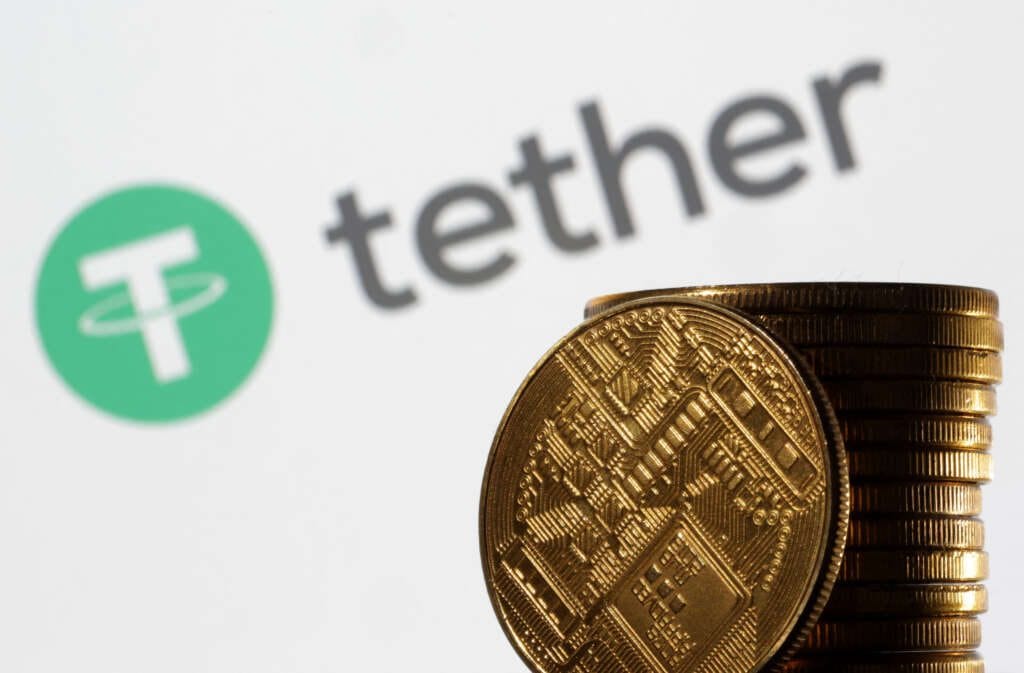
(Reuters) – Digital stablecoin tether is winning the race for the title of the crypto world’s “least risky” asset.
As a regional U.S. banking crisis widens and a regulatory crackdown on crypto firms deepens, investments within the cryptosphere are moving into tokens and coins perceived as relatively safe.
Tether is already the top performer among stablecoins — digital tokens pegged to some fiat asset like the dollar — and has seen its market value soar since March.
Its value is anchored by a 1-to-1 peg against a cache of dollars and a supply cap at around 85 billion tokens. Demand for the coin has been so strong that its peg has held above 1 since mid-April, hitting 1.002 last week.
“The banking crisis is fuelling ‘hyper-bitcoinisation’ – the inevitable endgame that the dollar will be worthless,” said Anders Kvamme Jensen, Oslo-based founder of the AKJ global brokerage and digital asset specialist.
That has spurred a flight to top cryptocurrencies such as bitcoin and ether, Jensen said.
GRAPHIC – Tether’s trust

Pegged stablecoins such as tether, meanwhile, are seen more as a store of value and as a tool to facilitate transfers between cryptocurrencies and also serve as collateral for derivative trades.
Conor Ryder, research analyst at digital assets data provider Kaiko, says tether’s premium reflects emerging trust in both the peg and in its perceived safety from the U.S. Securities and Exchange Commission (SEC).
Tether is owned by iFinex Inc, a company registered in British Virgin Islands which also owns the Bitfinex cryptocurrency exchange.
Tether’s main rival USDC, managed by Boston-based Circle, has been hurt by the revelation of its exposure to collapsed Silicon Valley Bank and the SEC’s scrutiny of fintech and crypto firms.
Another major stablecoin, BUSD, or the Binance USD token, has seen a decline since its developers said they would cease issuing new tokens after U.S. regulators labelled the asset an unregistered security.
The DAI token has been bogged down because of its unusual peg to reserves that include other stablecoins and crypto currencies.
“Tether is seen as less U.S.-oriented, meaning lower regulatory risk. Buying tether and bitcoin is really a vote against the U.S. system,” says Jensen.
On CoinMarketCap’s database of 23,891 tokens, tether has risen to number 3 with a market cap of $82 bln and a share of 6.83%.
NO NEWS IS GOOD NEWS
To be sure, tether has long been dogged by doubts about its peg being backed by dollar reserves. All stablecoins were hurt last year during a series of events such as the collapse of crypto hedge fund Three Arrows Capital, which followed the de-pegging of Terra USD and the failure of crypto exchange FTX.
“The interesting paradox here is that tether has become the industry’s most trusted stablecoin,” says Ryder.
“Tether’s safe haven status differs from bitcoin in that it is providing a safe peg to $1, one of the only stablecoins in the space that can make that claim at the minute. Bitcoin on the other hand is seen as a safe haven from monetary debasement as a form of money that is ‘outside’ the banking system.”
Bitcoin too has rallied some 73% this year, after hitting resistance around $31,000 last month.
(Editing by Sam Holmes)


